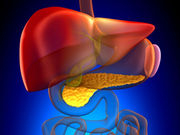Decrease in basal glucose oxidation; increases in lipid oxidation, plasma ketone concentration
THURSDAY, Sept. 1, 2016 (HealthDay News) — Dapagliflozin improves insulin sensitivity and increases lipid oxidation and plasma ketone concentration in patients with type 2 diabetes mellitus (T2DM), according to a study published online Aug. 25 in Diabetes Care.
Giuseppe Daniele, from the University of Texas Health Science Center at San Antonio, and colleagues randomized 18 individuals with T2DM to dapagliflozin or placebo in a 1:1 ratio. Subjects received an insulin clamp with tritiated glucose, indirect calorimetry, and muscle biopsies before and after two weeks.
The researchers found that fasting plasma glucose was reduced, and insulin-stimulated glucose disposal was increased by 36 percent (P < 0.01) with dapagliflozin. There was a decrease in glucose oxidation (P < 0.05), while nonoxidative glucose disposal increased (P = 0.03). Basal glucose oxidation decreased with dapagliflozin, and there was an increase in lipid oxidation and plasma ketone concentration (P < 0.01) in association with an increase in fasting plasma glucagon (P < 0.01). There was a reduction in the adenosine triphosphate synthesis rate with dapagliflozin, which correlated with an increase in the concentration of plasma ketones.
“Dapagliflozin improved insulin sensitivity and caused a shift from glucose to lipid oxidation, which, together with an increase in glucagon-to-insulin ratio, provide the metabolic basis for increased ketone production,” the authors write.
One author disclosed financial ties to pharmaceutical companies, including AstraZeneca, which manufactures dapagliflozin.
Full Text (subscription or payment may be required)
Copyright © 2016 HealthDay. All rights reserved.








